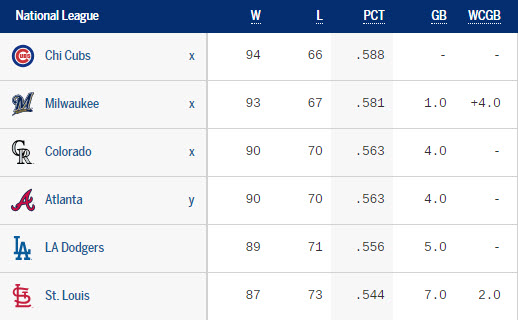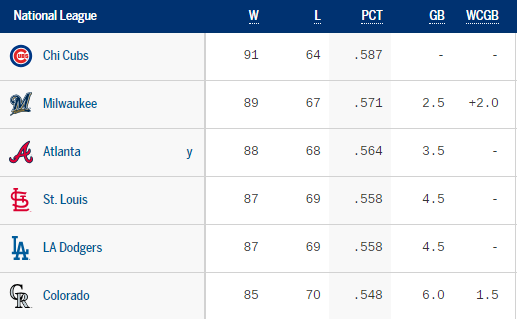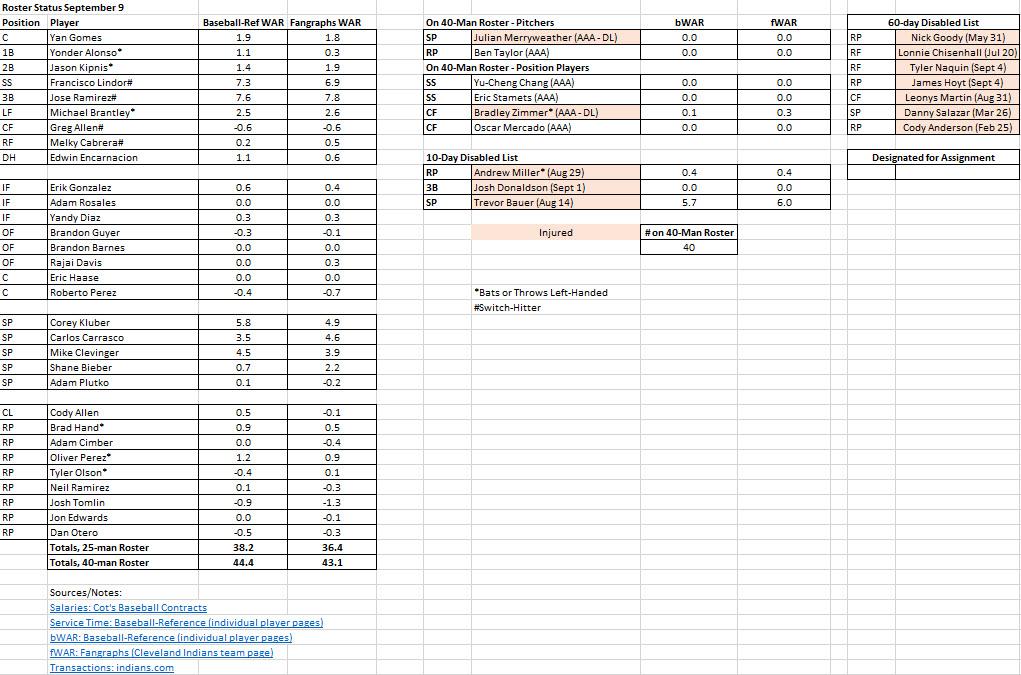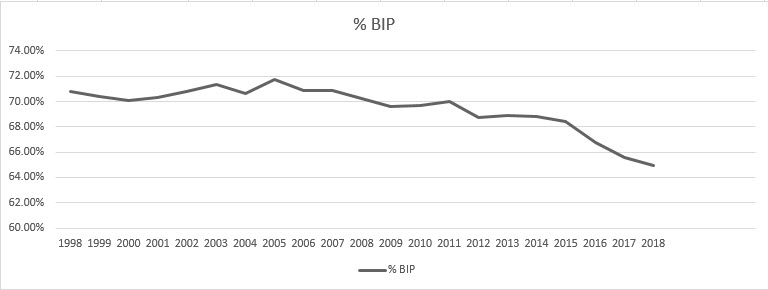After yesterday’s rather disappointing game (and that’s putting it mildly), there’s been a lot of thoughts swirling around my brain. This is an attempt to sort them out.
In my mind the key to the Indians winning in this postseason is to rely heavily on the starting rotation. It’s apparent that Cody Allen isn’t the same pitcher he was in 2016 (or even 2017 for that matter), even after the numerous attempts to “fix” his mechanics during the season. Andrew Miller has alternated between injury and ineffectiveness the entire season, and while he may be at his best heading into the ALDS, that best is a far cry from vintage Miller, where you could put him in and immediately start planning for two innings from then. Brad Hand and Oliver Perez have been great additions, but aren’t going to be enough to cover the back end of a game unless the Indians get tremendous starting performances.
That’s why yesterday’s game was so disturbing. The path to victory was that Corey Kluber would outpitch Justin Verlander, and the bullpen would hang on at the end. Had the Astros won in a close game or pulled away late, I’d be down (as for any postseason loss) but would be understanding of it. After all, a weak bullpen has been a given all season. But Kluber’s performance, beyond the line score, is what is unsettling. Kluber struck out just two hitters yesterday. Just two! His velocity was down at least two miles per hour. He was missing out of and in the strike zone. That isn’t just the Astros lineup not missing mistakes, that’s Kluber not being the Kluber that we’ve seen all year, even at the end of the campaign. I don’t think Kluber is injured, otherwise Francona would at the very least have elevated Carlos Carrasco to the Game 1/5 slot. That slot is very important, as the pitcher who starts Game 1 is the only starting pitcher to make two starts in the ALDS. After today’s loss, the chances that the Indians can both win the season and do it in 4 games is rather small, so Kluber is going to have to pitch again for the Indians to have any chance of advancing, and based on what I saw yesterday, that’s not something to look forward to, whether it’s bad mechanics (more likely) or injury (less likely, and let’s hope that it isn’t the case).
This is where the strategy I laid out earlier collapses if the Tribe rotation isn’t at full strength. When Terry Francona reluctantly had to go to the bullpen in the fifth inning, the options just aren’t there to hold the opposition in check. Dan Otero and Adam Cimber made the postseason roster by default, not because they pitched their way into it. Neil Ramirez, the last reliever cut, has been awful over the past several months, so I’m not going to blame the roster choices for the performance, but the overall pool of players. That’s why I think Trevor Bauer is being used in a role that doesn’t suit his ability at all. Bauer was brought into a game in which the Indians were trailing in the sixth inning, replacing the guy who started the year as a co-closer. That should give an idea as to what Terry Francona thinks of the bullpen right now. And if you have to use Bauer in a short relief role, you can’t use him as a bridge type of pitcher or even as a starter in the series. I imagined Bauer’s role as a finisher, coming into the game in the sixth or seventh inning and pitching the remainder of it, like the Astros used Charlie Morton in Game 7 of the World Series last year.
That’s why using Bauer in as low leverage a situation as you can get the playoffs was so puzzling. Sure, don’t plan on Trevor going deep into a game, but for goodness’ sakes, he’s one of your best 3 pitchers on the roster even after the injury!
The Indians have the talent to still pull off the series win, so don’t take the preceding as a acknowledgement of impending defeat. But as yesterday’s game showed, in order for them to win, the Indians absolutely need Carlos Carrasco, Mike Clevinger, and whoever ends up starting Games 4 and 5 to be at the top of their games, because if it becomes a bullpen game, the Indians are going to lose.










